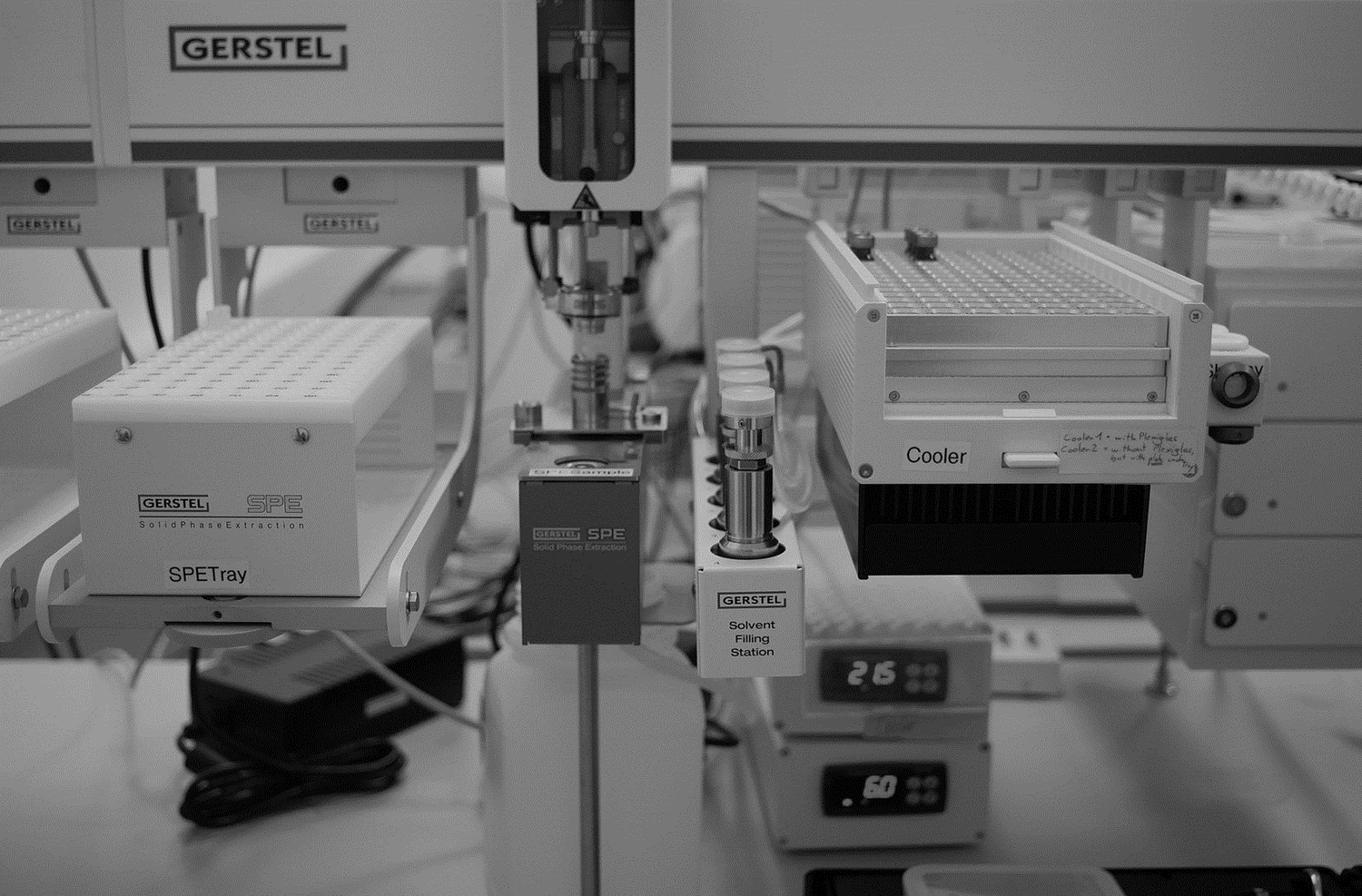Advanced analytical strategies for investigation of alternative methanol assimilation in methylotrophic yeasts
SUPERVISORS: STEPHAN HANN and DIETHARD MATTANOVICH
Background.
Methylotrophic yeasts constitute a special clade of budding yeasts (Shen et al. 2018), being able to grow on methanol on sole carbon and energy source. In biotechnology, they found wide application as platforms for the production of recombinant proteins. The pathways for assimilation of the one-carbon molecule methanol, and for energy production are well described (Yurimoto et al. 2011; Rußmayer et al. 2015). First, methanol is oxidized to formaldehyde by alcohol oxidase. Formaldehyde is then assimilated by dihydroxyacetone synthase in a transketolase reaction with xylulose-5-phosphate yielding dihydroxyacetone and glyceraldehyde-3-phosphate. Some bacteria have evolved alternative methanol assimilation pathways employing either the ribulose monophosphate cycle or the glycine-serine cycle. The RuMP cycle requires specialized enzymes, namely HPS, 3-hexulose-6-phosphate synthase (EC 4.1.2.43) and PHI, 6-phospho-3-hexuloisomerase (EC 5.3.1.27) which are not encoded in yeasts (Stolzenberg et al. 2013). For the glycine-serine cycle, however, formaldehyde is activated by a spontaneous reaction with tetrahydrofolate to methylene-tetrahydrofolate, from which it is transferred to glycine by glycine hydroxymethyl transferase (EC 2.1.2.1), forming serine which is then used as a precursor for all biomass formation (Chistoserdova 2003). As all enzymes necessary for this pathway are present in yeasts we hypothesize that the glycine-serine cycle may serve as an additional methanol assimilating pathway in methylotrophic yeasts.
To challenge this hypothesis this PhD project has a strong focus on the development and application of advanced methods for analysis of the intermediate metabolites. In general, pathway analysis can be conducted via so-called tracer studies which can generate qualitative or quantitative results on intermediate metabolites (Wiechert 2001). Qualitative tracer studies provide information about the fate of a metabolite of interest in a complex biological system, as the heavy isotope, which is introduced during cultivation, can be tracked by mass spectrometric methods throughout the different pathways. Generating quantitative information in the form of in vivo intracellular metabolic rates demands for more complex experimental, analytical and bioinformatic concepts. In biotechnology, molecular mass spectrometry in combination with gas chromatography, liquid chromatography or capillary electrophoresis is the method of choice for the above mentioned studies as it can determine isotopologue and tandem mass isotopomer pattern of the compounds of interest.
Research Questions:
- Which analytical strategy offers selective and efficient separation of the metabolites of interest?
- Can on-line mass spectrometric analysis extend the information obtained by 13C tracer studies on dynamic biological systems?
- Is methanol assimilated in yeasts only by the Xu5P cycle, or also by another formaldehyde assimilating pathway?
- Assuming that the glycine-serine cycle is active in yeasts, what is its quantitative importance?
- Assuming that the Ru5P pathway is not active in yeasts, can it be activated?

Aims and methods.
13C methanol labeling will be performed following an approach recently established in our labs (Zavec et al., manuscript in preparation). To eliminate the entry of formaldehyde into the more abundant Xu5P pathway the two genes encoding dihydroxyacetone synthase (DAS1 and DAS2) will be deleted, so that 13C label can only enter metabolism if any other assimilation pathway is active.
The labeled metabolites will be analyzed with LC- and GC-TOFMS based protocols. In the case of GC-TOFMS based analysis, positional labeling information will be obtained by isotopologue selective fragmentation after chemical ionization (GC-CI-QTOFMS). The concept has been recently developed within the group of Stephan Hann (Mairinger et al. 2016) and analytical development will enable the transfer to the metabolites of interest in this project. For the elucidation of methanol assimilation, the metabolite 5,10-methylenetetrahydrofolate plays a key role. As this compound is not amenable to GC-TOFMS analysis, our project aims at the development of a LC-QTOFMS or CE-QTOFMS approach, which shall also deliver positional information of the 13C atoms which have been incorporated during the labeling process (Mairinger et al. 2017). Moreover, the potential of ion mobility mass spectrometry will be investigated in the context with all QTOFMS based methods with the aim to increase selectivity and for further characterization of the intermediate metabolites.
In general, the investigation of cyclic pathways by labeling strategies is more complex and demands for rapid, time-resolved sampling. Accordingly, we aim to develop an on-line sampling approach, which is capable to determine the dynamics of the labeling process at high throughput. This technologically challenging strategy can be achieved by transfer of the cell cultivation to a sampling robot (MPSII Multisampler, Gerstel, Germany). As this strategy represents an innovative, but at the same time high-risk development, we are providing a back-up strategy in the form of a rapid sampling device at the multifermenters available at the Department of Biotechnology.
If the presence of the glycine-serine cycle can be verified we will analyze its quantitative relevance, and evaluate the expression levels of its involved genes by qPCR and/or RNASeq. In case that expression of individual genes is limiting they will be overexpressed to enhance the cycle. As the glycine-serine cycle leads to a net CO2 assimilation we plan to evaluate if this pathway may become a novel paradigm for carbon capture in yeast, as demonstrated recently for bacteria (Yu et al. 2018).
Related to the RuMP pathway we assume that it is not present in yeasts, which will be evaluated by the tracer studies. Overexpression of the two bacterial genes encoding for HPS and PHI in a DAS1/DAS2 double knockout strain will prove whether it can be activated in P. pastoris, and if it is possible to generate a hybrid yeast/bacterial methanol pathway.

Collaborating research groups where PhD Students could perform their research stay abroad:
Nicola Zamboni, ETH Zuerich
Stéphanie Heux, LISBP, Université de Toulouse
Chistoserdova L, Chen SW, Lapidus A, Lidstrom ME. 2003 Methylotrophy in Methylobacterium extorquens AM1 from a genomic point of view. J Bacteriol. 185(10):2980-7.
Mairinger T, Hann S. Implementation of data-dependent isotopologue fragmentation in 13C-based metabolic flux analysis. Anal Bioanal Chem 2017;409(15):3713-8.
Mairinger T, Steiger M, Nocon J, Mattanovich D, Koellensperger G, Hann S. Gas chromatography-quadrupole time-of-flight mass spectrometry-based determination of isotopologue and tandem mass isotopomer fractions of primary metabolites for 13C-metabolic flux analysis. Anal Chem 2015;87(23):11792-802.
Rußmayer H, Buchetics M, Gruber C, Valli M, Grillitsch K, Modarres G, Guerrasio R, Klavins K, Neubauer S, Drexler H, Steiger M, Troyer C, Al Chalabi A, Krebiehl G, Sonntag D, Zellnig G, Daum G, Graf AB, Altmann F, Koellensperger G, Hann S, Sauer M, Mattanovich D, Gasser B. Systems-level organization of yeast methylotrophic lifestyle. BMC Biol 2015;13(1).
Shen XX, Opulente DA, Kominek J, Zhou X, Steenwyk JL, Buh KV, Haase MAB, Wisecaver JH, Wang M, Doering DT, Boudouris JT, Schneider RM, Langdon QK, Ohkuma M, Endoh R, Takashima M, Manabe RI, Čadež N, Libkind D, Rosa CA, DeVirgilio J, Hulfachor AB, Groenewald M, Kurtzman CP, Hittinger CT, Rokas A. 2018. Tempo and Mode of Genome Evolution in the Budding Yeast Subphylum. Cell. 175(6):1533-1545.e20. doi: 10.1016/j.cell.2018.10.023.
Stolzenberger J, Lindner SN, Persicke M, Brautaset T, Wendisch VF. 2013. Characterization of fructose 1,6-bisphosphatase and sedoheptulose 1,7-bisphosphatase from the facultative ribulose monophosphate cycle methylotroph Bacillus methanolicus. J Bacteriol. 195(22):5112-22. doi: 10.1128/JB.00672-13.
Yu H and Liao JC. 2018. A modified serine cycle in Escherichia coli coverts methanol and CO2 to two-carbon compounds. Nat Commun. 9: 3992.
Yurimoto H, Oku M, Sakai Y. 2011. Yeast methylotrophy: metabolism, gene regulation and peroxisome homeostasis. Int J Microbiol. 2011:101298.
Wiechert W, 2001, 13C Metabolic Flux Analysis. Metab Eng 3:195–206. doi: 10.1006/mben.2001.0187
